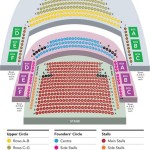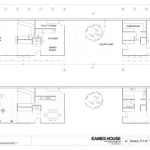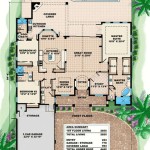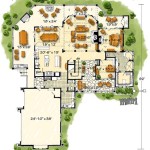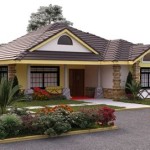Decoding House Plans: A Deep Dive into Interior Design Elements
House plans are more than just blueprints; they represent the foundational vision for a living space. While the exterior facade captures attention, the interior house plans truly outline the functionality and aesthetic potential of a home. These plans dictate the flow of movement, the placement of rooms, and the integration of design elements that contribute to a comfortable and engaging environment. Understanding the intricacies of interior house plans is crucial for homeowners, builders, and interior designers alike, ensuring a project aligns with intended lifestyle and stylistic preferences.
The interpretation of interior house plans requires a comprehensive understanding of architectural conventions, building codes, and design principles. These plans encompass a multitude of details, from the precise dimensions of each room to the location of electrical outlets and plumbing fixtures. Mastery of these elements is essential for transforming a conceptual drawing into a tangible, livable space.
Interior design, as depicted in house plans, goes beyond mere aesthetics; it involves a careful consideration of space utilization, material selection, and the interplay of light and shadow. Well-designed interior spaces enhance the quality of life by promoting functionality, comfort, and visual harmony.
Key Point 1: Understanding the Anatomy of Interior House Plans
Interior house plans utilize a standardized set of symbols, abbreviations, and notations to convey information about the proposed design. These elements allow professionals to accurately interpret the spatial layout and construction details. Familiarity with these conventions is essential for both understanding and communicating about the project.
Floor plans are the primary component, providing a bird's-eye view of each level of the house. These plans depict the arrangement of rooms, hallways, and other interior spaces, along with dimensions, door and window locations, and the placement of stationary fixtures and appliances. Scale is carefully considered, ensuring accurate representation of distances and proportions.
Elevations offer a vertical perspective of the interior walls, showcasing the design features of each room. These elevations are particularly important for illustrating details such as cabinetry, built-ins, window treatments, and the overall aesthetic of the walls. Interior elevations are essential for communicating design intent to carpenters, painters, and other tradespeople.
Sections provide a cut-through view of the house, revealing the relationship between different floors and the details of wall construction, ceiling heights, and structural components. Sections are critical for understanding how the various elements of the house fit together and for identifying potential conflicts or issues.
Detailed drawings provide enlarged views of specific areas, such as kitchens, bathrooms, or staircases. These drawings offer a higher level of detail, including information about materials, finishes, and construction techniques. Detail drawings are essential for ensuring that complex design elements are executed correctly.
Schedules, often included in the plans, provide lists of specific items, such as doors, windows, and finishes. These schedules contain information about manufacturer, model number, size, and other relevant specifications. Schedules are crucial for procurement and ensuring consistent application of materials throughout the project.
Key Point 2: Interpreting Design Elements within Interior Plans
Interior house plans indicate various design elements that contribute to the overall aesthetic and functionality of the space. Understanding how to interpret these elements is key to visualizing the final product and ensuring alignment with design preferences.
Space planning, a fundamental aspect of interior design, involves the arrangement of furniture and fixtures to optimize traffic flow and create functional zones within each room. House plans indicate the proposed layout, considering factors such as room size, shape, and the intended use of the space. Efficient space planning enhances the usability and comfort of the home.
Lighting is a critical element of interior design, influencing the mood, ambiance, and functionality of a space. Interior house plans indicate the location of light fixtures, switches, and outlets, allowing for strategic placement of both natural and artificial light sources. The types of fixtures specified, such as recessed lighting, pendants, or sconces, contribute to the overall design aesthetic and address specific lighting needs.
Material selection plays a significant role in defining the aesthetic character of a space. Interior house plans often specify the types of flooring, wall coverings, and finishes to be used throughout the house. These selections influence the visual texture, color palette, and overall design style. Coordinating materials effectively creates a cohesive and harmonious interior environment.
Color palettes impact the mood and perception of space. While specific paint colors may not always be indicated directly on the plans, the overall design style and material selections often suggest a particular color scheme. Consideration is given to the interplay of colors and their impact on the perception of room size, light, and atmosphere.
Hardware, including door knobs, cabinet pulls, and light fixture finishes, are integral to the overall design. Interior house plans often specify the types of hardware to be used, ensuring consistency and complementing the chosen materials and finishes. These seemingly small details contribute significantly to the overall aesthetic appeal.
Key Point 3: Integrating Functionality with Aesthetic Considerations
Effective interior house plans seamlessly integrate functionality with aesthetic considerations, creating spaces that are both visually appealing and practical for everyday living. This requires careful planning and a deep understanding of the homeowner's needs and preferences.
Kitchen design, a critical component of interior house plans, focuses on creating a functional and efficient workspace for food preparation and gathering. The plan indicates the location of appliances, countertops, and storage solutions, as well as the layout of the work triangle (sink, refrigerator, and cooktop). Careful consideration is given to ergonomics and workflow to maximize efficiency and comfort.
Bathroom design prioritizes hygiene, privacy, and relaxation. Interior house plans indicate the placement of fixtures such as toilets, sinks, showers, and bathtubs, with particular attention to code requirements for clearances and ventilation. The design also considers accessibility and safety features, such as grab bars and non-slip flooring.
Storage solutions are integral to maintaining a clutter-free and organized living environment. Interior house plans incorporate various storage options, such as closets, cabinets, and built-in shelving, tailored to the specific needs of each room. Efficient storage maximizes usable space and enhances the overall functionality of the home.
Accessibility considerations are increasingly important in modern house plans. Universal design principles aim to create spaces that are usable by people of all abilities, regardless of age or physical limitations. This includes features such as wider doorways, accessible bathrooms, and ramps or elevators. Integrating accessibility features enhances the usability and inclusivity of the home.
Technology integration is increasingly common in contemporary house plans. Interior house plans may include provisions for smart home systems, such as automated lighting, climate control, and security systems. These features enhance convenience, energy efficiency, and overall comfort.
Environmental considerations are often integrated into modern interior house plans. This may include the use of sustainable materials, energy-efficient appliances, and water-saving fixtures. These features contribute to a healthier and more environmentally responsible living environment.
Ultimately, interior house plans serve as a roadmap for creating a living space that aligns with the homeowner's vision. By understanding the intricacies of these plans, individuals can effectively communicate their needs and preferences to architects, builders, and interior designers, ensuring a successful and satisfying project.

Floor Plans Types Symbols Examples

House Plans How To Design Your Home Plan

Floor Plans Types Symbols Examples

Floor Plans Types Symbols Examples

Little Adjustments For Single Story House Convers More Windows Slight Mods On Master Suit And Rework Othe Layout Plans Small

Floor Plans Types Symbols Examples

Gorgeous Guest House Floor Plans Interior Design Ideas Alisha Taylor

Gorgeous Guest House Floor Plans Interior Design Ideas Alisha Taylor

3d Floor Plans Renderings Visualizations Fast Delivery

House Plans Under 2000 Square Feet

